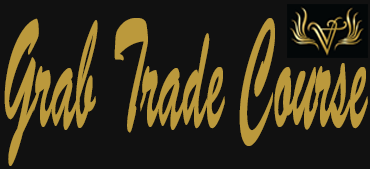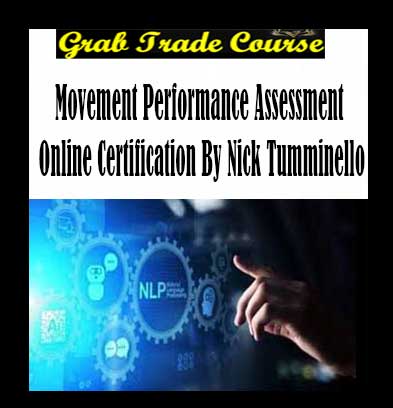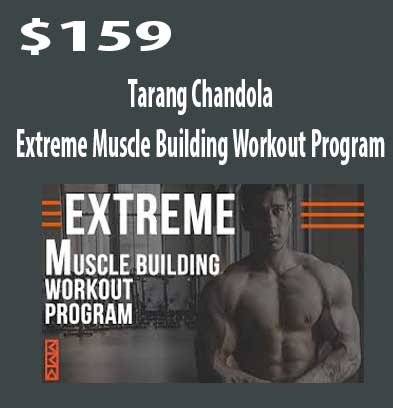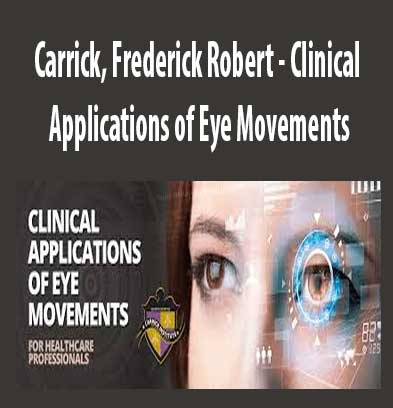Nick Tumminello – Movement Performance Assessment Online Certification
Description
Nick Tumminello – Movement Performance Assessment Online Certification review, Nick Tumminello – Movement Performance Assessment Online Certification download, Nick Tumminello – Movement Performance Assessment Online Certification free
Nick Tumminello – Movement Performance Assessment Online Certification
Get Your Clients Training Safely, Quickly, And Effectively With The Only Assessment Designed Specifically For Personal Trainers
Are you a personal trainer that’s learned all the movement assessments out there but feel like none of them work well for your clients?
Do you struggle to know exactly which exercises are best for your new clients to get them started safely and without pain?
Have you been looking for the perfect way to create client programs that improve their movement and get results without spending half the workout doing corrective exercises or warm-up drills?
If so, it’s not your fault and help is on the way.
The initial assessment is one of the most important factors when starting a new client or re-starting an old one. It sets the tone for your working relationship, reveals any pain or movement inabilities, and tells you exactly which exercises should make up the client’s first program.
But there’s one big problem, most assessments out there right now don’t do a good job accomplishing all 3 of these outcomes. They fall short on at least one of the three and fail to serve trainers in a way that makes their job easier, not harder.
Some get you hunting for all the things that are “wrong” with a client and encourage you to fix these with rehab exercises before training them hard, but this leaves clients bored and paranoid about being “broken.”
Others might focus on identifying what exercises or movements clients can do but offer no clear direction on exactly which variation is best for their abilities or body type. You’ll have a place to start, but it won’t always be the best one.
While we’ve come a long way in creating assessments to identify how clients move, we’ve yet to design one for trainers that’s simple to perform, quick to understand, and easy to use for designing initial client programs. At least until now.
If you’re tired of piecing together multiple assessments, using too many drills and exercises to fix deficiencies, or not knowing exactly which exercises to use with clients right from the get-go, then the Movement Performance Assessment is designed specifically for you.
Your Training and Assessment Specialist: Nick Tumminello
Nick Tumminello has become known as the “Trainer of Trainers” for his innovative, hybrid fitness training concepts and for his ability to provide simple, honest, and immediately applicable solutions to common problems fitness professionals face.
He’s an internationally recognized presenter and mentors thousands of trainers through live workshops, mentorship programs, and home-study programs.
Nick is the author of four books (Strength Training For Fat Loss, Building Muscle and Performance, Your Workout Perfected, and Strength Zone Training). Nick has worked with a variety of clients from the NFL and NBA to professional bodybuilders & figure models to exercise enthusiasts of all fitness levels. He was the NSCA’s 2016 Personal Trainer of the Year and was a 2015 Personal Trainer Hall of Fame inductee. Nick is the co-author of the National Strength and Conditioning Association’s (NSCA) Program Design Essentials and Foundations of Fitness Programming guide, is the Editor-in-Chief of the NSCA’s Personal Training Quarterly journal, has produced over 20 courses, is a regular contributor to several major fitness magazines and websites, and is a regular presenter at conferences all over the world.
You’ve likely seen Nick’s work in Men’s Health, Men’s Fitness, Oxygen, Fitness RX, Muscle & Fitness and Personal Fitness Professional. Nick is also a featured contributor to several popular fitness training websites.
In short, when the best organizations in the fitness industry want proven, research-backed information, Nick is their trusted resource.
The Best Assessment Produces The Most Relevant Data
Most new client assessments focus on what a client can’t do instead of what they can do. That’s an issue, because it establishes a situation where you’re pre-disposed to believing there are things that “need to be fixed” and you feel compelled to address those first.
You want to do the right thing and address the deficiency, but often that leads you to designing a training program that feels more like therapy than exercise. Not to mention, your client is now made to feel that they’re broken or not ready for real exercise, which reduces their confidence and undermines their motivation.
Do you think they’re going to be excited about following that program? Of course not.
The Movement Performance Assessment (MPA) flips the script on the traditional assessment process. It’s designed to identify exactly what your clients can do right now and gives you immediate direction on which exercises their first program should include and how they should be performed.
Instead of conducting tests to locate “dysfunction,” the MPA has your clients perform exercises that actually produce data relevant to exercise performance. That means you can get them moving safely and training with a purpose from day 1.
Sure, you’ll also be able to identify if clients have pain or issues that prevent them from performing movements to your standard, but the MPA provides multiple options to address these situations quickly and easily. Consider it a fresh new lens through which to determine how to address solutions.
It’s not as simple as just choosing to fix an issue or not to because there’s no one way. Instead, you’ll learn how to determine which route to go while still giving your clients a training effect. And that’s the real magic – your clients can improve their movement quality and train hard at the same time with the right solution.
Assessments Should Offer More Clarity and Less Confusion
Have you ever wondered why corrective exercises or drills work for some clients and not others? That’s because corrective exercise can be a solution, but it’s not the only solution. And, it’s usually not the best solution.
The Movement Performance Assessment is simpler and more effective than traditional assessments because it prioritizes finding the perfect exercise variation or modification of a given movement pattern before investigating corrective exercises. Additionally, it’s based on the movements you already know. So, you won’t have to learn a whole new system of exercises or complicated tests.
Think of it this way – you already know the foundational movement patterns your clients need to train, the MPA just tells you which exercises to start with. This allows you to spend more time focusing on doing what you do best – effective exercises.
You’ll be able to get your clients moving towards their goals faster and without any pain in a way that will make them feel accomplished.
Module #1 – MPA Essentials
1.1 Assessments vs. Screens: Do we have it backwards?
1.2 It’s not about getting more data. It’s about getting more relevant data.
1.3 What should we be looking for, really?
1.4 If you’re assessing these things, you’re still guessing
1.5 How to assess the movements that matter.
1.6 The Hierarchy of exercise
1.7 How trainers lose their way with assessments
1.8 Try this before corrective exercises… because it takes care of most movement deficiencies better and faster.
Module #2 – MPA Rules
2.1 Your clients aren’t broken!
2.2 Fitting exercises to clients, not fitting clients to exercises
2.3 Assessing unloaded and loaded movement
2.4 How to assess your client while giving them a great first session
2.5 What to (not) tell your client about and during the assessment
2.6 Every movement assessment has a reason you and your client understand.
2.7 Awareness vs. Ability
2.8 Pain vs. Performance
2.9 The missing exercises for pain
2.10 M.O.S.T Exercises: Mobility + Strength and Stability
2.10 The Mandatory Movement Assessments
Module #3 – Squat Assessment
3.1 Should we assess the Overhead Squat?
3.2 The fastest way to find their deepest squat
3.3 Why floor hip mobility assessments fail
3.4 Hip over-coverage vs. Under-coverage: The research on hip anatomy, mobility and pain.
3.5 What about butt wink?
3.6 Loaded assessment
3.7 How to quickly find their optimal loaded squat depth
3.8 How (Not) to Go Heavy: Quickly know the best high-load squat variation for them
3.9 Should the squat be a main movement?
3.10 Knee Pain: The instant movement fixes for zero pain.
3.11 Back Pain: The instant movement fixes for zero pain.
3.12 Hip Pain: The instant movement fixes for zero pain.
3.13: Heal Raised Squats: Good or Bad?
3.14 M.O.S.T Exercises for Ankle Mobility
Module #4 – Split-Squat Assessment
4.1 Unloaded assessment
4.2 The fastest fix for knee alignment.
4.3 The missing assessment for optimal tibia position and foot turnout
4.4 What to do if it’s easy for them
4.5 What to do if it’s difficult for them
4.6. Loaded Assessment
4.7 If they have knee pain, this will immediately make them pain-free.
4.8 If they have Hip pain, do this for zero pain.
4.9 The problem with the Bulgarian Split Squat
4.10 A more functional assessment of hip flexor tightness
4.11 M.O.S.T. Exercises for Tight Hip Flexors
Module #5 – RDL Assessment
5.1 Unloaded assessment
5.2 The fastest form fix
5.3 The problem with holding a dowel on their spine
5.4 How to quickly find their optimal depth for spinal health.
5.5 The common hip hinging mistake that can cause back overuse.
5.6 When NOT to do hip hinging, and what to do instead.
5.7 Loaded assessment
5.8 Do this to eliminate back pain from hip hinging fast
5.9 Research shows this part of the hamstrings gets tight, and the simple prevention strategy.
Module #6 – Row Assessment
6.1 Loaded assessment
6.2 The best cue to improve their alignment immediately!
6.3 How the row can help improve the hip hinge.
6.4 What to do if they’re still not able to maintain proper positioning
6.5 How to quickly and easily teach proper scapular movement for the clients who just can’t seem to get it.
6.6 M.O.S.T exercises for rounded shoulders
Module #7 – Plank Assessment
7.1 Straight-arm or bent arm plank?
7.2 Advanced plank assessment
7.3 What does it mean for programming if they can achieve a good plank position?
7.4 What does it mean for programming if they can’t achieve good spinal alignment.
7.5 The best (and worst) core exercises for people with a large lordodic curve.
7.6 What the research really says about pelvic tilt, core strength and back pain.
7.7 Should you actively contract your abs while doing a plank?
7.8 How to immediately use this for your “Workout of the day”.
Module #8 – Overhead Press Assessment
8.1 Unloaded Assessment
8.2 Loaded Assessment
8.3 The safest way to press overhead
8.4 Do this to eliminate shoulder pain
8.5 This exercise is more joint friendly than landmine presses
8.6 What the research really says about scapula position, posture and pain.
8.7 M.O.S.T exercises for improving overhead shoulder mobility faster
Module #9 – Dumbbell Bench Press Assessment
9.1 The problem with assessing the Push-up
9.2 Unloaded Assessment
9.3 Loaded Assessment
9.4 What the best depth?
9.5 What does it mean when barbell bench press hurts their shoulders, but dumbbells and push-ups don’t?
9.6 If the barbell, dumbbells and push-ups hurt their shoulders, this will get them pressing without pain immediately.
9.7 Why floor presses suck, and how to make them great.
9.8 Should you avoid pushing exercises if they have rounded shoulders?
Module #10 – Mobility Assessments
10.1 How to easily individualize your mobility warm-ups, even with group training.
10.2 Test, Retests that get instant improvements in range of motion (and wow your clients).
10.3 Thoracic Spine Mobility: Test, Retest
10.4 Shoulder Mobility: Test, Retest
10.5 How hip anatomy should change your hip mobility drills
10.6 These quick, research-based tests will show you who mobility work is a waste of time for.
Module #11 – Rotational Assessments for Athletic Performance
11.1 The problem with anti-rotation training
11.2 The two movement prerequisites for optimal rotational power in sports
11.3 The two mandatory Rotational movement assessments
11.4 The missing exercises for improved rotational power and spine health
11.5 The misunderstood research on lumbar spine rotation, spinal mechanics and back health.
Module #12 – Using the MPA Results In Your Programs
12.1 Using your MPA results is simple, easy and fast.
12.2 How to use your MPA results for in-person and Online Personal Training.
12.3 How to use your MPA for your Workout of the Day and Group Training.
12.4 Joint friendly exercise database for long-term programming.
” Nick Tumminello’s expertise in exercise science is second to none. I’ve trained all over the country and found no one better. His methodology in regard to building a bigger, faster, stronger body is a formula for success.
Steve Weatherford
Former Punter For The NY Giants (2011-2014)
“Nick Tumminello is an innovator in the fitness field. His combination of scientific knowledge and practical experience make him a go-to guy for getting results from a fitness program.
Brad Schoenfeld, PhD
Author of The M.A.X. Muscle Plan and Science and Development of Muscle Hypertrophy
” If you’re looking for accurate and scientifically backed information, quality workouts that are interesting and fun, and programs that are designed by someone who walks the walk and trains real people, you need not look any further than Nick Tumminello. He’s the real deal.
Cassandra Forsythe, PhD, RD, CSCS
Professor of Exercise Science, Author, and Mom
No Fluff, Just The Most Relevant Stuff
Hey, Nick here.
I designed the MPA because I couldn’t find an assessment that I thought helped trainers like me look at the things that matter most. I needed a way of finding exactly what my clients could do right away so I could build their first program without exercises that were too easy or ones that could cause pain.
No complicated tests that didn’t resemble actual exercises.
No telling clients that they’re broken in 5 different ways.
Just simple and effective ways to find the perfect exercise fit for each and every client quickly and easily.
If you’ve been looking for the same thing, then you’ll want to pick up the Movement Performance Assessment digital course today.
Our Policies
A. Product Quality
We will provide GOOD quality of courses fast. If any issue, email: [email protected].
We sure that your problem will be support as soon as possible.
B. Digital Shipping Proceess
After your payment, we will review your payment, Then, we will send you PCLOUD LINK OF COURSES through email in 3 – 8 hours. If any issue, we will inform you as soon as possible.









Reviews
There are no reviews yet.